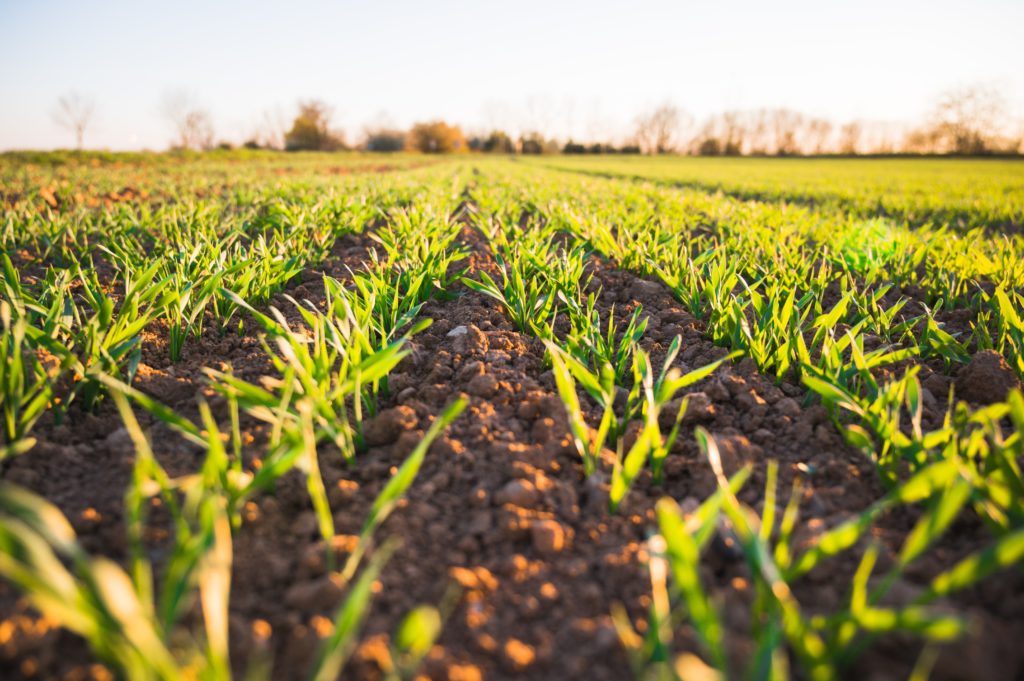Recently, the U.S. Department of Agriculture (“USDA”) announced it is providing insurance premium benefits to certain producers who planted cover crops during the 2022 crop year. This program, known as the Pandemic Cover Crop Program (“PCCP”), is administered by USDA’s Risk Management Agency (“RMA”) and it is the second year this program is offered to eligible producers. PCCP is part of the USDA-led Pandemic Assistance for Producers initiative and is funded through the Consolidated Appropriations Act, 2021 (“CAA”). RMA is accepting Report of Acreage forms (FSA-578) through March 15, 2022 for eligible producers interested in PCCP benefits.
In general, many producers plant cover crops to improve soil health. However, because of pandemic-related economic challenges, many producers faced financial challenges maintaining their cover crop systems. According to RMA, it is providing PCCP to “reduce producers’ overall premium bill to help ensure producers can continue this climate-smart agricultural practice.”
Under PCCP, eligible producers can receive a premium subsidy that is worth up to $5 an acre. When calculating the total premium amount due, a participating producer’s Approved Insurance Provider (“AIP”) will adjust their premium bills according to the amount of acreage eligible for the subsidy. However, producers cannot receive more than the full premium amount they owe.
For example, suppose a producer has 300 insured acres of soybeans and they report 200 as cover crop. The farmland’s eligible benefit is 200 acres multiplied by $5, which equals $1,000. Thus, the producer’s premium subsidy is $1,000 up to their premium owed for the acreage.
To be eligible for PCCP, producers must have (1) planted a qualifying cover crop during the 2022 crop year (cover planted after June 15, 2021), and (2) obtained coverage under an eligible insurance policy. According to the Federal Crop Insurance Corporation’s (“FCIC”) final rule for the program, a “qualified cover crop” includes all that are reportable to FSA, such as “cereals and other grasses, legumes, brassicas, and other non-legume broadleaves, and mixtures of two or more cover crop species planted at the same time.” An insured crop is not considered a “qualifying cover crop” under the program. A full list of qualifying cover crops under PCCP can be found here.
While most insurance policies are available for PCCP, there are some policies that already provide similar premium support through underlining coverage. Therefore, PCCP is not available for:
- Post-Application Coverage Endorsement (PACE)
- Enhanced Coverage Option (ECO)
- Hurricane Insurance Protection – Wind Index (HIP-WI)
- Supplemental Coverage Option (SCO)
- Stacked Income Protection (STAX) (if an endorsement)
- Margin Protection (MP) (if an endorsement)
Producers eligible for PCCP benefits will automatically receive the premium support by reporting the qualifying cover crops they planted on a Report of Acreage form (FSA-578). Participating producers must file this form by March 15, 2022 at their local FSA county office. Any qualifying cover crop acreage reported after this date will not receive a PCCP premium benefit.
The information participating producers must provide in the Report of Acreage form includes:
- Cover crop type or variety
- Number of acres of the cover crop
- Map with approximate boundaries for the cover crop
- Planting dates
- Planting pattern (when applicable)
- Irrigation practices
Additionally, participating producers must ensure the cover crop fields they report on the Report of Acreage form matches the information they report to an AIP for their crop insurance policies. RMA encourages producers to contact their local USDA Service Center for appointments to file their report. Producers in states that offer similar programs to PCCP—such as Illinois, Indiana, and Iowa—can also receive the premium support under PCCP if they satisfy the eligibility requirements and file a Report of Acreage before the reporting deadline.
Overall, PCCP does not change the normal acreage reporting requirements or deadlines for producers. Also, participating in this program does not change any other terms of a producer’s crop insurance policy. Producers who satisfy the eligibility requirements are encouraged to file a Report of Acreage form by March 15, 2022 to receive premium support under PCCP.
Additional USDA Assistance Opportunities
In January, USDA announced it would extend crop insurance flexibilities to AIPs and producers until June 30, 2022 or later. For specific information on these flexibilities, click here. Additionally, USDA is currently accepting applications for the Spot Market Hog Pandemic Program (“SMHPP”), which provides direct financial assistance to certain hog producers who sold hogs through a negotiated sale between April 16, 2020 through September 1, 2020. Eligible producers interested in applying for SMHPP assistance must do so by February 25, 2022.
To view USDA’s press release announcing PCCP, click here.
To view the FCIC regulations for PCCP, click here.
For frequently asked questions on PCCP, click here.
For updates on PCCP, click here.
For updates on SMHPP, click here.
To read more about USDA’s Pandemic Assistance for Producers initiative, click here.
